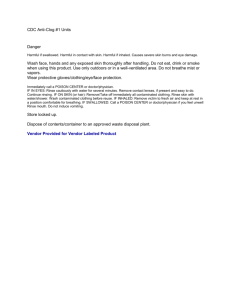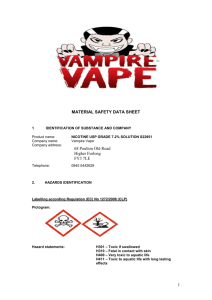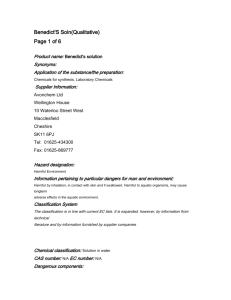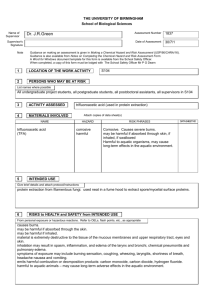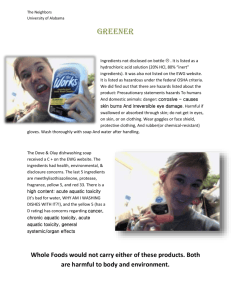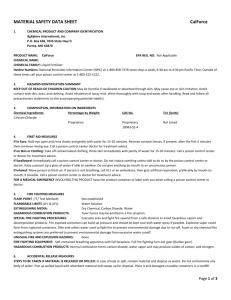Pesticides - Garden Rant
advertisement
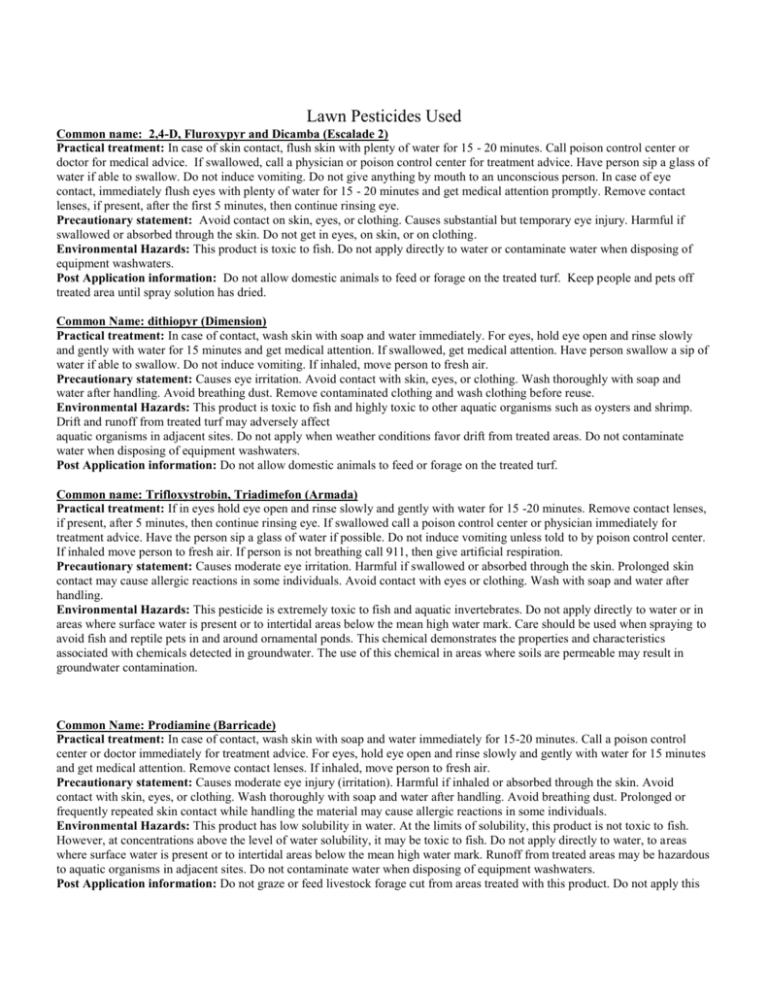
Lawn Pesticides Used Common name: 2,4-D, Fluroxypyr and Dicamba (Escalade 2) Practical treatment: In case of skin contact, flush skin with plenty of water for 15 - 20 minutes. Call poison control center or doctor for medical advice. If swallowed, call a physician or poison control center for treatment advice. Have person sip a glass of water if able to swallow. Do not induce vomiting. Do not give anything by mouth to an unconscious person. In case of eye contact, immediately flush eyes with plenty of water for 15 - 20 minutes and get medical attention promptly. Remove contact lenses, if present, after the first 5 minutes, then continue rinsing eye. Precautionary statement: Avoid contact on skin, eyes, or clothing. Causes substantial but temporary eye injury. Harmful if swallowed or absorbed through the skin. Do not get in eyes, on skin, or on clothing. Environmental Hazards: This product is toxic to fish. Do not apply directly to water or contaminate water when disposing of equipment washwaters. Post Application information: Do not allow domestic animals to feed or forage on the treated turf. Keep people and pets off treated area until spray solution has dried. Common Name: dithiopyr (Dimension) Practical treatment: In case of contact, wash skin with soap and water immediately. For eyes, hold eye open and rinse slowly and gently with water for 15 minutes and get medical attention. If swallowed, get medical attention. Have person swallow a sip of water if able to swallow. Do not induce vomiting. If inhaled, move person to fresh air. Precautionary statement: Causes eye irritation. Avoid contact with skin, eyes, or clothing. Wash thoroughly with soap and water after handling. Avoid breathing dust. Remove contaminated clothing and wash clothing before reuse. Environmental Hazards: This product is toxic to fish and highly toxic to other aquatic organisms such as oysters and shrimp. Drift and runoff from treated turf may adversely affect aquatic organisms in adjacent sites. Do not apply when weather conditions favor drift from treated areas. Do not contaminate water when disposing of equipment washwaters. Post Application information: Do not allow domestic animals to feed or forage on the treated turf. Common name: Trifloxystrobin, Triadimefon (Armada) Practical treatment: If in eyes hold eye open and rinse slowly and gently with water for 15 -20 minutes. Remove contact lenses, if present, after 5 minutes, then continue rinsing eye. If swallowed call a poison control center or physician immediately for treatment advice. Have the person sip a glass of water if possible. Do not induce vomiting unless told to by poison control center. If inhaled move person to fresh air. If person is not breathing call 911, then give artificial respiration. Precautionary statement: Causes moderate eye irritation. Harmful if swallowed or absorbed through the skin. Prolonged skin contact may cause allergic reactions in some individuals. Avoid contact with eyes or clothing. Wash with soap and water after handling. Environmental Hazards: This pesticide is extremely toxic to fish and aquatic invertebrates. Do not apply directly to water or in areas where surface water is present or to intertidal areas below the mean high water mark. Care should be used when spraying to avoid fish and reptile pets in and around ornamental ponds. This chemical demonstrates the properties and characteristics associated with chemicals detected in groundwater. The use of this chemical in areas where soils are permeable may result in groundwater contamination. Common Name: Prodiamine (Barricade) Practical treatment: In case of contact, wash skin with soap and water immediately for 15-20 minutes. Call a poison control center or doctor immediately for treatment advice. For eyes, hold eye open and rinse slowly and gently with water for 15 minutes and get medical attention. Remove contact lenses. If inhaled, move person to fresh air. Precautionary statement: Causes moderate eye injury (irritation). Harmful if inhaled or absorbed through the skin. Avoid contact with skin, eyes, or clothing. Wash thoroughly with soap and water after handling. Avoid breathing dust. Prolonged or frequently repeated skin contact while handling the material may cause allergic reactions in some individuals. Environmental Hazards: This product has low solubility in water. At the limits of solubility, this product is not toxic to fish. However, at concentrations above the level of water solubility, it may be toxic to fish. Do not apply directly to water, to areas where surface water is present or to intertidal areas below the mean high water mark. Runoff from treated areas may be hazardous to aquatic organisms in adjacent sites. Do not contaminate water when disposing of equipment washwaters. Post Application information: Do not graze or feed livestock forage cut from areas treated with this product. Do not apply this product through any type of irrigation system. Do not apply aerially. Do not apply to golf course putting greens. Common name: Sulfentrazone (Dismiss) Practical treatment: If in eyes hold eye open and rinse slowly and gently with water for 15 -20 minutes. Remove contact lenses, if present, after 5 minutes, then continue rinsing eye. If swallowed call a poison control center or physician immediately for treatment advice. Do not give any liquid to the person. Do not induce vomiting unless told to by poison control center. Do not give anything by mouth to an unconscious person Precautionary statement: Causes moderate eye irritation. Harmful if swallowed, inhaled, or absorbed through skin. Avoid contact with eyes or clothing. Wash with soap and water after handling. Avoid breathing vapor or spray drift. Environmental Hazards: This pesticide is toxic to marine/estuarine invertebrates. Do not apply directly to water, to areas where surface water is present or to intertidal areas below the mean high water mark. Drift and runoff may be hazardous to terrestrial and aquatic plants in neighboring areas. Do not contaminate water when disposing of equipment washwaters or rinsate. Post Application information: A second application may be required 6-8 weeks after the initial treatment. Common name: Chlorantraniliprole (Acelepryn) Practical treatment: Hold eye open and rinse slowly and gently with water for 15-20 minutes. Remove contact lenses, if present, after the first 5 minutes, then continue rinsing eye. Call a poison control center or doctor for treatment advice. Precautionary statement: Causes moderate eye irritation. Avoid contact with eyes or clothing. Wash thoroughly with soap and water after handling and before eating, drinking, chewing gum or using tobacco. Environmental Hazards: This pesticide is toxic to aquatic invertebrates, oysters and shrimp. Do not apply directly to water. Drift and runoff may be hazardous to aquatic organisms in water adjacent to use sites. Post Application information: Optimal results will be achieved if the product is irrigated into the turf immediately after application. Common name: Imidacloprid (Merit) Practical treatment: In case of skin contact, flush skin with plenty of water for 15 - 20 minutes. Call poison control center or doctor for medical advice. If swallowed, call a physician or poison control center for treatment advice. Have person sip a glass of water if able to swallow. Do not induce vomiting. Do not give anything by mouth to an unconscious person. In case of eye contact, immediately flush eyes with plenty of water for 15 - 20 minutes and get medical attention promptly. Remove contact lenses, if present, after the first 5 minutes, then continue rinsing eye. Precautionary statement: Causes moderate eye injury (irritation). Harmful if inhaled or absorbed through the skin. Avoid contact with skin, eyes, or clothing. Wash thoroughly with soap and water after handling. Avoid breathing dust. Prolonged or frequently repeated skin contact while handling the material may cause allergic reactions in some individuals. Environmental Hazards: This product is toxic to fish. Do not apply directly to water or contaminate water when disposing of equipment washwaters. Post Application information: For optimum control, irrigation or rainfall should occur within 24 hours after application to move the active ingredient through the thatch. Avoid mowing turf or lawn areas until after irrigation or rainfall has occurred so that uniformity of application will not be affected. Common name: Trichlorfon (Proxol, Dylox) Practical treatment: If swallowed, get medical attention immediately. If in eyes, flush with water for at least 15 minutes. Get medical attention immediately. If on skin, remove contaminated clothing. Wash skin with soap and water. Get medical attention immediately. Precautionary statement: May be fatal if swallowed. Harmful if inhaled or absorbed through the skin. Avoid breathing mist or dust. Environmental Hazards: This product is toxic to fish and wildlife and is extremely toxic to aquatic invertebrates. Runoff from treated areas may be hazardous to aquatic organisms in neighboring areas. Post Application information: Watering-in is required (is mandatory) for all uses. Do not graze or feed livestock forage cut from areas treated with this product. Common name: Propiconazo (Fathom) Practical treatment: In case of skin contact, flush skin with plenty of water for 15 - 20 minutes. Call poison control center or doctor for medical advice. If swallowed, call a physician or poison control center for treatment advice. Have person sip a glass of water if able to swallow. Do not induce vomiting. Do not give anything by mouth to an unconscious person. In case of eye contact, immediately flush eyes with plenty of water for 15 - 20 minutes and get medical attention promptly. Remove contact lenses, if present, after the first 5 minutes, then continue rinsing eye. Precautionary statement: Avoid contact on skin, eyes, or clothing. Causes substantial but temporary eye injury. Harmful if swallowed or absorbed through the skin. Do not get in eyes, on skin, or on clothing. Environmental Hazards: This product is toxic to fish and wildlife and is extremely toxic to aquatic invertebrates. Runoff from treated areas may be hazardous to aquatic organisms in neighboring areas. Post Application information: Keep children and pets off treated areas until spray has dried. Common name: Bifenthrin (Crosscheck) Practical treatment: In case of skin contact, wash with plenty of soap and water. Get medical attention if irritation occurs and persists. If swallowed, drink 1 or 2 glasses of water and induce vomiting by touching the back of the throat with a finger. Never induce vomiting or give anything by mouth to an unconscious person. Contact a medical doctor. In case of eye contact, immediately flush with water for at least 15 minutes, lifting the upper and lower eyelids intermittently. See a medical doctor immediately. Precautionary statement: Avoid contact on skin, eyes, or clothing. Causes substantial but temporary eye injury. Harmful if swallowed or absorbed through the skin. Do not get in eyes, on skin, or on clothing. Environmental Hazards: Bifenthrin is highly toxic to fish and aquatic arthropods. In general, the aquatic arthropods are the most sensitive species. Care should be taken to avoid contamination of the aquatic environment. Bifenthrin had no effect on mollusks at its limit of water solubility. Bifenthrin is only slightly toxic to both waterfowl and upland game birds. Post Application information: Do not graze or feed livestock forage cut from areas treated with this product. Do not apply this product through any type of irrigation system. Do not apply aerially. Do not apply to golf course putting greens.
